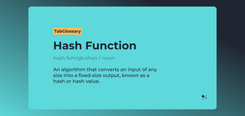What Is a Limit Order? Limit Order vs Market Order. Limit Order vs Stop Order
Here we give the definition of a limit order and touch on limit order variations. We also compare limit orders to other order types and explain when limit orders are best used.
What is a Limit Order?
A limit order is a request given by a trader to a broker or exchange to buy or sell a particular amount of a cryptocurrency, stock, security, commodity, etc. as it reaches a specified price or better. The final limit order execution price will not be higher than the predetermined price for a buy order, and not lower than the predetermined price for a sell order.
Limit orders are employed when the price of a trade is a priority over order execution time. Unlike market orders which complete trades instantly, limit orders are executed on the premise of a set underlying asset value.
With limit orders execution is not guaranteed. If a limit order’s price never gets to a specified level within a set time period the order will expire unfilled.
How do Limit Orders Work?
Limit orders provide traders with control over the price at which a transaction will be completed. They prioritize asset cost over time and even certainty of execution. With limit orders investors are able to specify a minimum price to sell and a maximum price to buy.
Limit orders are a good option for price sensitive traders. They can help control the value of assets with high volatility and allow investors to get specific valuations without manually monitoring the market. Limit orders are generally utilized when a trader has a target entry or exit point in mind and is willing to wait for the market to change in their favor.

Limit orders enable users to set an expiry date also known as “time in force”. Time in force is used to point out for how long a limit order will stay open until it expires or executes. A “Day only” (DAY) limit order cancels the trade in case it is not filled after a trading day is concluded. Good-Till-Canceled (GTC) orders may stay active for an indefinite period of time (depending on the exchange) until manually canceled. All-Or-None (AON) trades are annulled if not filled for the entire amount at once.
By checking the “post only” box a trader can make sure that their limit order will be placed strictly on the order book. Orders that are not executed immediately (maker orders) increase the liquidity on the exchange and therefore rewarded with lower trading fees when ultimately completed. A limit order with the “post only” option selected will automatically be canceled in case it can be executed immediately upon placement (and thus will not get onto the order book).
Iceberg orders are large trades divided into small limit orders. They are usually implemented to avoid disrupting the market with a single large order. Iceberg orders consist of visible and hidden parts, with the latter transitioning to visibility as the former gets filled.
Pros and cons of a limit order
Limit Order Pros:
- Offer maximum price control. Limit orders do not surpass the set maximum price for buying or the minimum price for selling. By using limit orders traders are able to protect themselves from sudden price fluctuations in an underlying asset;
- Allow future trades. Limit orders are filled automatically whenever a target price occurs in the future;
- Provide an opportunity to add conditions that grant additional control over trades (Eg. Good-Till-Canceled (GTC) orders, All-Or-None orders (AON)).
Limit Order Cons:
- May never be executed. If a certain asset never crosses the particular price level set for an order, the transaction will not be completed at all.
- Could be filled in parts. Limit orders are only filled if pricing conditions are met. A particular limit order might only be partially completed at a set price with the rest set to expire.
- May involve additional fees. If not executed at once, a limit order might lead to investors paying trading fees each time part of the order is filled.
Limit Order vs. Market Order
While market orders fill trades immediately at еру current available price, limit orders delay execution until the price of the underlying asset gets to a certain point.
Market orders are employed when execution of a transaction takes priority over price. They are most suitable for trading relatively small amounts of assets that do not typically experience dramatic price swings.
Conversely, limit orders focus on price rather than on promptness of a transaction. They are convenient for speculative trades in volatile markets and for dealing with large amounts of capital where small price differences can really add up.
Limit Order vs. Stop Order
A stop order is an order to buy or sell an asset at the time its price moves past a specified point. When the asset value passes the predetermined entry or exit point, the stop order most commonly executes as a market order. Stop orders allow investors who are unable to monitor their portfolios for extended periods of time and/ or trade on highly volatile markets to avoid losses and lock in profits.
As opposed to limit orders which execute trades strictly as the underlying asset reaches a predetermined price, stop orders get the first best price available past the activation point.
Example of a Limit Order
Let us say token X is currently trading at 22 USD, although an investor considers it would be a good buy at 20 USD or less. In this case, they place a limit order to buy token X at 20 USD with the “time in force” parameter for instance set to 1 month. If X does not get to the limit price before the expiration date, the order will never be filled. If the asset price does go down to 20 USD or less, with enough volume available at that price on an exchange, the order will be filled and the investor will obtain the specified amount of X for 20 USD per unit or less.
Limit orders FAQs
What is a buy limit order?
A buy limit order is an order to buy a particular asset at or below a stipulated price. It allows an investor to set a limit on how much they are willing to pay for a certain trade. Buy limit orders provide traders with control over the final purchase price of an asset. They are helpful when trading markets with high volatility.
What is a sell limit order?
A sell limit order is an order to sell an asset at or above a specified price. By using sell limit orders traders gain the right to specify the minimum price at which they would be ready to sell a particular asset.
Is a limit order safer than a market order?
Market orders offer a high chance of order completion while limit orders might not be filled at all. Market orders are in most cases completed immediately upon submission, while limit orders hold out for a specific price. In terms of certainty of completion market orders are a safer option for a trade.
At the same time, in market orders the final price of a trade is always determined by the market, giving traders little control over the total amount they pay. Limit orders, on the other hand, execute trades exclusively at the predetermined price, allowing investors to know how much they will be paying for a trade at all times. In terms of control over price limit orders are safer than market orders.
How long do limit orders last?
Day-only (DAY) limit orders expire at the end of the trading day. Depending on the exchange Good-Till-Canceled (GTC) limit orders might have varying restrictions for a maximum time in force. Most commonly it is set at 90 days. For GTC orders a trader determines the time an order will be active before it is filled or canceled. All-Or-None (AON) limit orders stay active until executed in their entirety or canceled.




